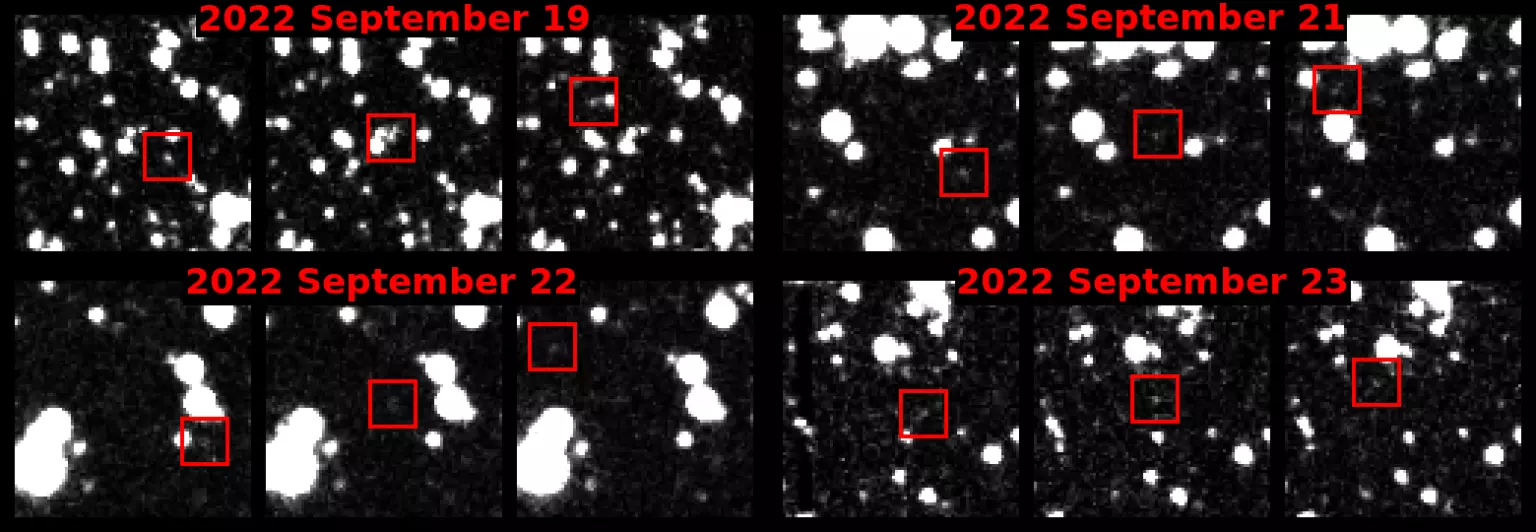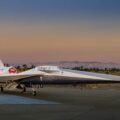The innovative HelioLinc3D algorithm, designed to detect near-Earth asteroids, has proven its potential by identifying its first “potentially hazardous asteroid,” solidifying its role in the imminent 10-year survey set to be conducted by the Vera C. Rubin Observatory.
The asteroid, labeled 2022 SF289, was detected during a preliminary test of the algorithm in collaboration with the ATLAS survey in Hawaii, underscoring the enhanced capabilities of HelioLinc3D to detect such celestial bodies with limited and scattered observations.
2022 SF289, measuring roughly 600 feet in length, does not appear to threaten Earth in the foreseeable future. Yet its discovery demonstrates the real-world capabilities of the algorithm, as emphasized by Rubin scientist Dr. Ari Heinze, the principal developer of HelioLinc3D.
“By demonstrating the real-world effectiveness of the software that Rubin will use to look for thousands of yet-unknown potentially hazardous asteroids, the discovery of 2022 SF289 makes us all safer,” Dr. Heinze said in a press release issued by the University of Washington.


The solar system is teeming with rocky bodies, from tiny asteroids to moon-sized dwarf planets. While most of these celestial objects keep their distance, some, known as near-Earth objects, orbit closer to Earth. Among these, “potentially hazardous asteroids,” which come within roughly 20 times the distance from Earth to the moon, receive particularly close scrutiny to avert any potential collision calamities.
Scientists currently use specialized telescopes, such as the NASA-funded ATLAS survey from the University of Hawaii’s Institute for Astronomy, to scout for potentially hazardous asteroids.
The detection method involves capturing images of different parts of the sky four times each night and identifying a moving point of light across the series of images. To date, this method has helped discover around 2,350 potentially hazardous asteroids, but scientists estimate an equal number are yet to be found.
In the coming years, the Vera C. Rubin Observatory, stationed in the Chilean Andes, is set to contribute to this endeavor. Receiving primary funding from the U.S. National Science Foundation and the U.S. Department of Energy, the observatory’s comprehensive sky surveys will substantially accelerate the rate of potentially hazardous asteroid detection.
Thanks to its 8.4-meter mirror and a colossal 3,200-megapixel camera, Rubin will provide rapid sky scans, making current telescopes’ four-time nightly visits obsolete. The novel scanning pattern necessitates a unique detection algorithm, hence the development of HelioLinc3D.
HelioLinc3D, developed by a software team from the University of Washington’s DiRAC Institute, was designed with the forthcoming era of Rubin’s data-intensive astronomy in mind. Tested on pre-existing data sets to see if it could identify a new asteroid that current algorithms would miss, the software passed with flying colors.
During this test, HelioLinc3D picked out 2022 SF289, initially recorded by ATLAS on September 19, 2022, from a distance of 13 million miles from Earth.
ATLAS had recorded the asteroid on four separate nights but never the required four times in a single night. Despite this, HelioLinc3D successfully merged the fragmented data from these nights to identify the asteroid.
As Dr. Larry Denneau, a leading ATLAS astronomer, put it, the discovery essentially gives scientists a “bigger, better telescope.”
“Any survey will have difficulty discovering objects like 2022 SF289 that are near its sensitivity limit, but HelioLinc3D shows that it is possible to recover these faint objects as long as they are visible over several nights,” Dr. Denneau said in the statement issued by the University of Washington.
2022 SF289 was further confirmed using existing Pan-STARRS and Catalina Sky Survey observations. Additional unrecognized observations were gathered using data collected by the Zwicky Transient Facility telescope and the B612 Asteroid Institute’s asteroid analysis and mapping platform known as ADAM.
Researchers say the potentially hazardous asteroid, 2022 SF289, was able to escape previous detections because it was passing in front of rich starfields in the Milky Way.
An asteroid the size of 2022 SF289, roughly 600 feet in diameter, hitting the Earth could potentially result in significant destruction, particularly if it struck a populated area or triggered a tsunami by landing in an ocean.
The damage of an asteroid impact primarily depends on the impact velocity, angle, and composition. However, for comparison, the meteor that exploded over Chelyabinsk, Russia, in 2013 was about 66 feet wide. Upon hitting the Earth’s atmosphere, the Chelyabinsk asteroid released energy equivalent to around 500 kilotons of TNT or about 20 to 30 times more energy than the bombs that destroyed Hiroshima and Nagasaki. A 600-foot-wide, like 2022 SF289, would result in an explosion significantly more extensive than this.
The impact would instantly vaporize the asteroid, creating a massive crater, and the shock wave would flatten structures and forests within tens of miles. Material ejected from the impact site would fall back to Earth, potentially igniting wildfires and further expanding the destruction zone. If it were to hit over the ocean, its impact could cause massive tsunamis, devastating coastal areas miles away from the impact site.
On a positive note, a 600-foot asteroid would not be a “planet killer,” and 2022 SF289 is considerably smaller than the 6-mile-wide asteroid that is believed to have led to the extinction of dinosaurs 66 million years ago.
Though 2022 SF289 is expected to come within 140,000 miles of Earth’s orbit, nearly 100,000 miles closer than the moon, experts say it poses no risk of collision with Earth for the foreseeable future.
International space agencies are constantly monitoring near-Earth objects to ensure early detection of potential threats, and programs like NASA’s Asteroid Threat Assessment Project (ATAP) use high-fidelity computer simulations to assess the probable risks posed by asteroid strikes.
With the success of HelioLinc3D, the chances of detecting potentially hazardous asteroids are significantly increased, potentially providing scientists with valuable time to develop various strategies to deflect or prevent a significant impact on Earth.
Dr. Mario Jurić, Director of the DiRAC Institute, professor of astronomy at the University of Washington, and leader of the team behind HelioLinc3D, says the success of HelioLinc3D represents a preview of the upcoming era of space discovery, driven by advances in algorithms as well as telescope technology.
“This is just a small taste of what to expect with the Rubin Observatory in less than two years when HelioLinc3D will be discovering an object like this every night.”
Tim McMillan is a retired law enforcement executive, investigative reporter and co-founder of The Debrief. His writing typically focuses on defense, national security, the Intelligence Community and topics related to psychology. You can follow Tim on Twitter: @LtTimMcMillan. Tim can be reached by email: tim@thedebrief.org or through encrypted email: LtTimMcMillan@protonmail.com

